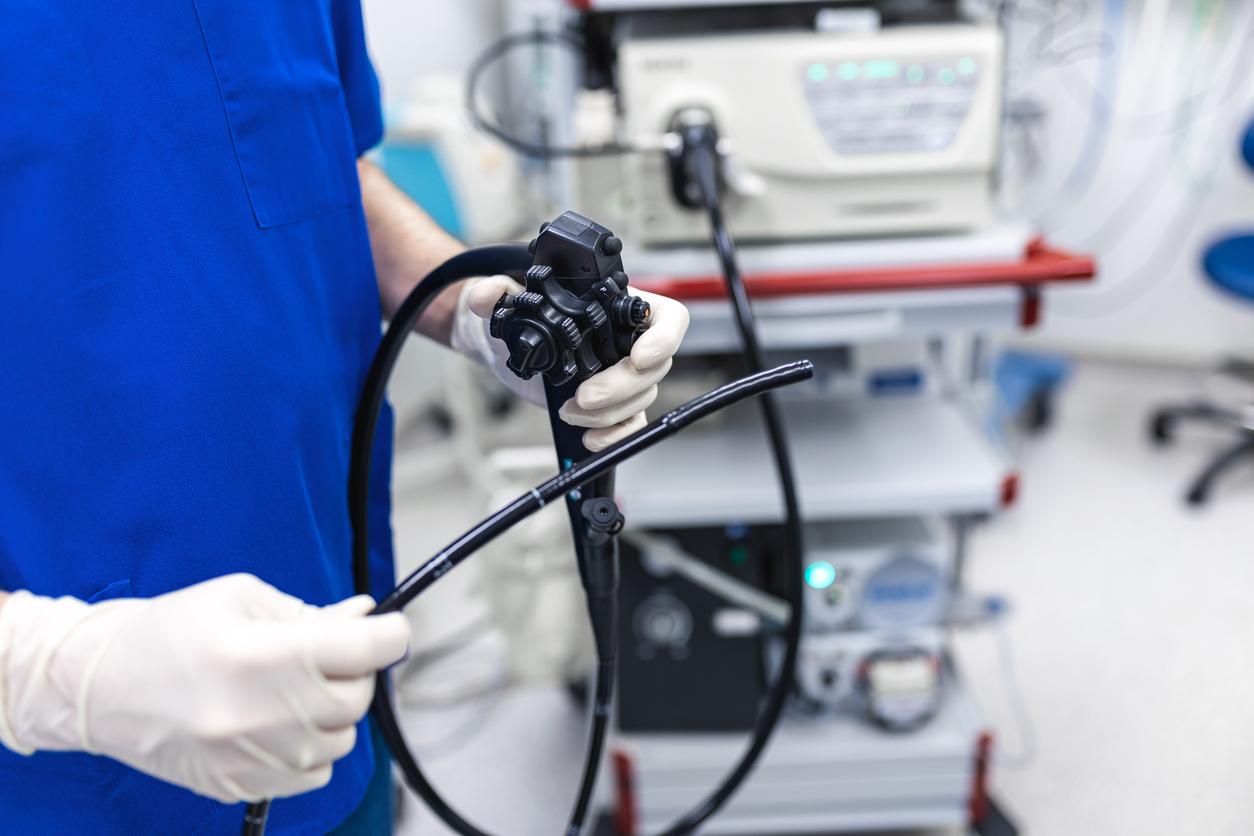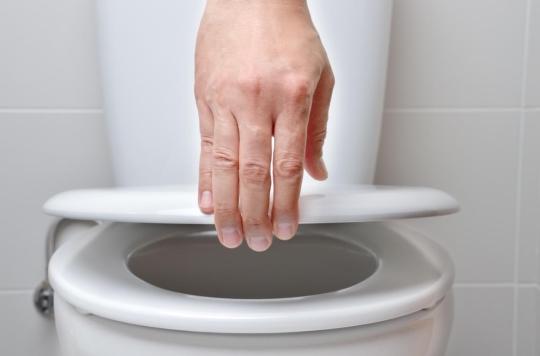After five years of experimentation, colorectal cancer screening extends to all departments. Objective: reduce the death rate by 20%.
“My wife got an invitation to participate in colorectal cancer screening, but I didn’t. Why ? I want one too, ”says a man in his sixties. “May God preserve me from this disease”, loose this woman who refuses the leaflet handed to her by the Ademas nurse (1). This Rhône association parked its Info Santé Bus on the market square in Vaux-en-Velin to inform the population of the launch of generalized screening for colorectal cancer in the department, and throughout France. And the reactions are varied. “Some women are already familiar with Ademas since we are the ones who organized breast cancer screening,” says Dr Patricia Soler-Michel, coordinating doctor of Ademas. And frankly, the simple word Ademas opens doors. But the one word cancer closes others. This is why the association has decided to run the Info Santé Bus in ten towns in the Rhône and to encourage 50-74 year olds to participate in screening (see report opposite).
Reach 50% participation rate
A health education action strewn with pitfalls even if the figures are eloquent. Colorectal cancer is the 3rd cancer in terms of incidence (behind the prostate and the breast) and the 2nd in terms of mortality after that of the lung. There are 17,000 deaths per year. But detected in stage I, the five-year survival rate is 90%. The public health interest is therefore not in dispute. However, tested since 2003, generalized screening is struggling to be implemented. In June, all the French departments are mobilized. “We will have lived through years of hesitation before it leaves the woods,” admitted Professor Dominique Maraninchi, president of the Inca (2), last May. Now, the target to be reached is precise: 16 million men and women between 50 and 74 years old will be invited to be tested every two years. The expected effectiveness is also clearly displayed: a participation rate of 50% and a colonoscopy rate of 85% among those who have had a positive test. Thus, the death rate would drop by about 20%.
To put the odds on their side, the public authorities have learned from breast cancer screening. Concretely, the general practitioner is, this time, the backbone of the device since it is up to him to give his patient the test to look for occult bleeding in the stool. Studies carried out in the Aquitaine and Nord-Picardie CPAMs have indeed shown that when the test is distributed by a general practitioner, it is almost three times more likely to reach its goal than if it is sent by post. The general practitioner must also assess the patient’s level of risk and ensure that he does not present exclusion criteria. In the event of suspicious digestive symptoms, a personal history of cancer or colorectal adenomas, it is recommended to perform a colonoscopy immediately.
Obstacles remain despite everything. In particular, the debate over the reliability of the Hemoccult test has created a stir in the scientific community. Indeed, a negative test does not exclude the presence of cancer since the sensitivity of the test to guaiac is 50%. “During screening training, it is the concern that general practitioners have expressed the most,” testifies Dr. Claude Martineaux, former member of the Onco Argenteuil Network. The remuneration of physicians is also likely to put obstacles in the way. “It is symbolic,” recognizes Professor Jean Faivre, president of the technical group on colorectal cancer screening. However, the remuneration of preventive acts is under debate in the agreement. So I hope it will improve ”. Currently, the remuneration depends on the number of tests carried out in the year. It ranges from 60 euros for 10 to 20, to 1030 euros for 100 to 200 tests. “It’s totally unfair, protests Dr. Martineaux. Because if the patient does not go for his test, the doctor has still done his information work. ”
On the public side, colorectal cancer screening also needs to be proven. According to a TNS-Sofres survey carried out for Roche laboratories, 36% of those questioned simply do not feel concerned. This is not surprising since screening is only intended for asymptomatic patients. They are also 18% to regret the lack of incentive of their doctors.
The experience in the 23 pilot departments is not yet completely conclusive. According to the French Institute for Public Health Surveillance, the participation rate in the first screening invitation campaign is on average 42%, therefore below 50%. He would drop below the 40% mark for the second campaign. To convince more broadly, a general public campaign is planned for September.
(1) Association for organized cancer screening in the Rhône
(2) National Cancer Institute
.















